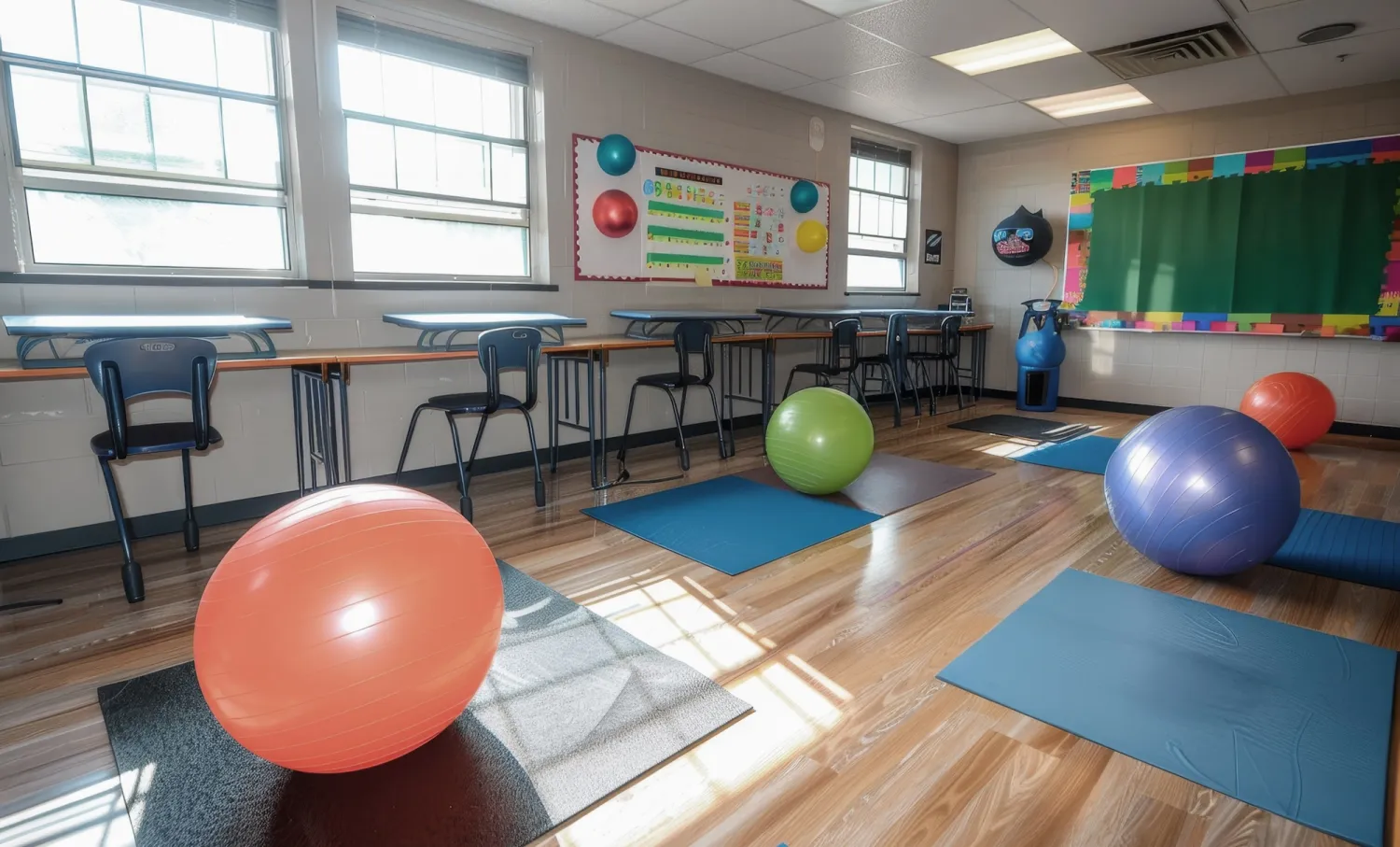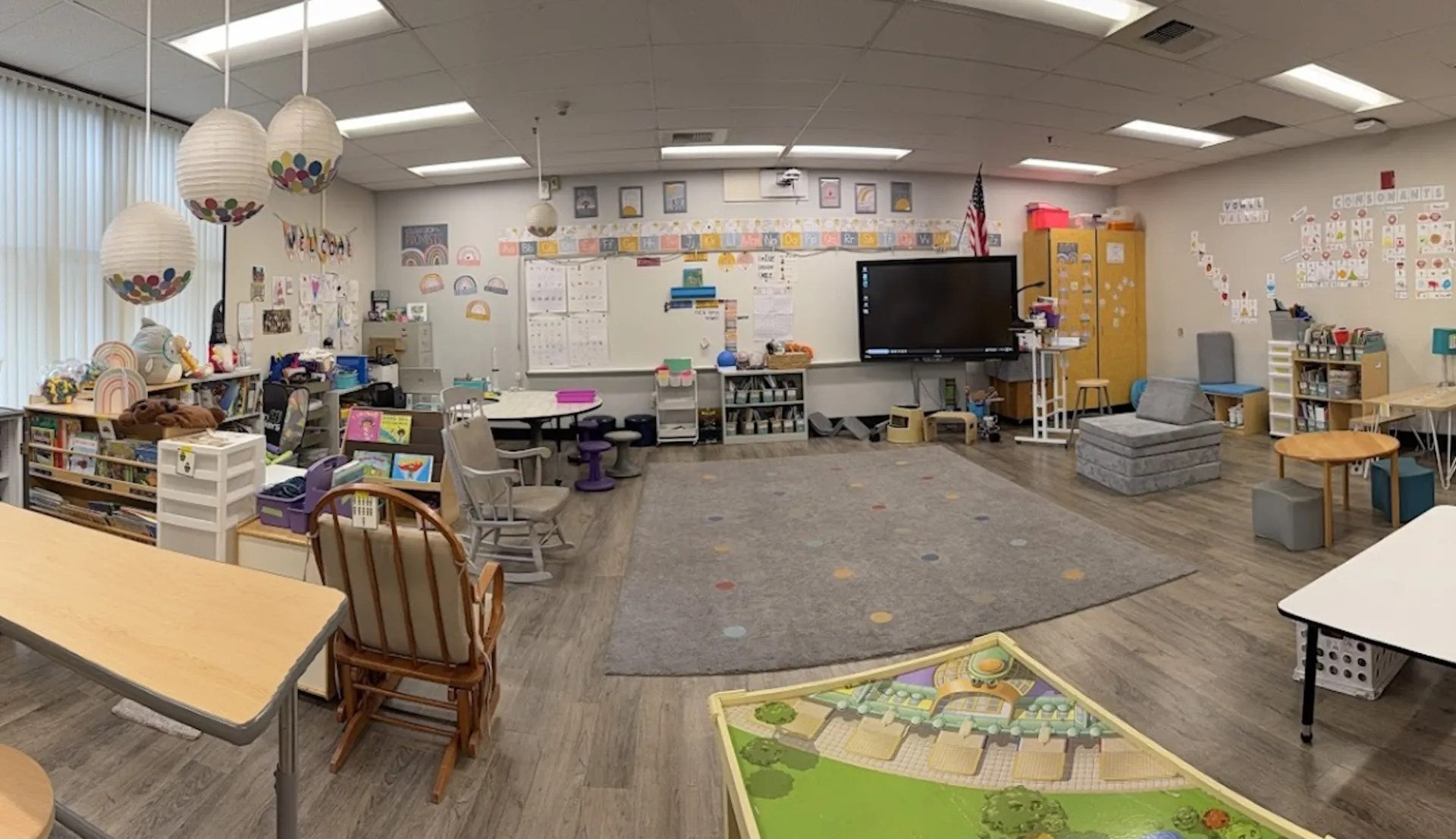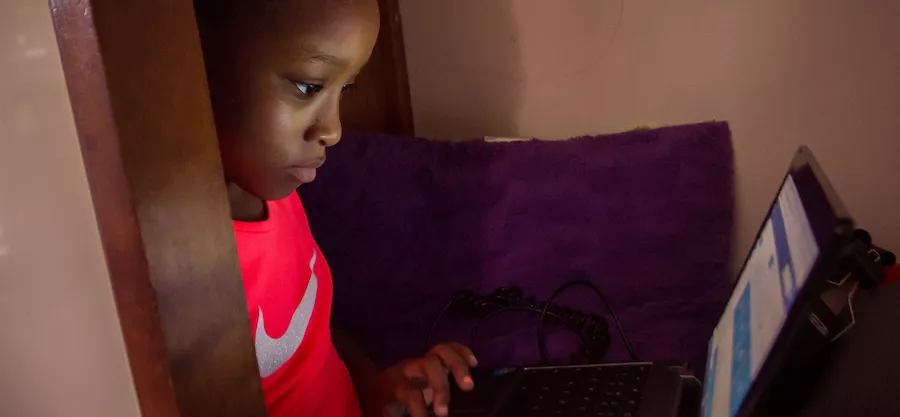When the gym teacher at Colleen Metzler’s Vermont school said there were exercise balls that could be used as classroom seating, Metzler took full advantage of the opportunity—and replaced all her classroom seating in her 4th grade classroom.
"I got rid of all of my chairs and only had exercise balls,” she says. “And it was chaos. Because I was in my first year as a classroom teacher, and I had exercise balls that I had no idea how to manage!”
Metzler jumped headfirst into the world of flexible seating but learned a lot from that first experience. Now, her classroom has office chairs, wobble chairs—and the exercise balls that began her journey.
"As the year went on, I slowly started adding regular chairs as another option,” she says.
She now focuses more on establishing routines and giving students a choice in where they sit and the option to move in their seats while learning to get their energy out.
Flexible seating can be anything from a wide variety of classroom chairs to the way chairs and desks can be arranged, along with types of desks such as standing or sitting desks.
While flexible seating may have become more popular in schools, it may not be for everyone. But some elementary school teachers have noticed that it increases student engagement and reduces behavioral issues. In a higher education setting, a study found that flexible seating options support our most vulnerable students, with research showing that students with Attention Hyperactive Deficit Disorder (ADHD) and other neurodivergent students benefit from the options and ability to move.
Engagement Up, Behaviors Down
Beth Pittman, a first-grade teacher in northern California, started using flexible seating by first adding more tables in her room instead of only desks. She then slowly integrated more flexible seating options, like wobble stools and a comfortable couch and standing desks.
“I kind of noticed as we were going that my behavior issues in my classroom started decreasing by a lot,” Pittman says. “Kids were feeling somewhat in control. They could choose where they wanted to sit for independent work time. Behaviors were going down and engagement was going up.”
Pittman said traditional seating allowed kids to zone out more often or rush through their work.

“When they were able to choose their own spot, where they were more comfortable, I noticed that they were less wiggly, more focused,” she says.
She also noticed their test scores were going up, and that they were doing better at independent work because they had that extra freedom. She says the system especially helped students with ADHD.
“Their body naturally wants to move, and it helps get out a lot of that extra energy that they have inside without them even realizing it,” she says.
Metzler said having these options can make her fourth graders feel more mature, and thus they take things more seriously.
“I'm trusting that we can have these different seats in our classroom and that we can take care of them, and we can still attend to our learning. They take that very seriously,” she says. “It builds confidence.”
Organizing the Classroom
Metzler lays out expectations for the students at the beginning of the year, She has a chart that shows where every student sits on a given day, which she says many students pride themselves on learning.
She sets the expectations for each chair. For example, she doesn’t allow bouncing on exercise balls to avoid students distracting others but does let them move back and forth on them.
“I want students to sit and be able to move and do what they need to do to get their energy out without being a distraction,” she says. “We're learning, we do what we need to, but it shouldn't affect other people's learning.”
The seats are assigned to specific desks, and the students aren’t supposed to move them. The seats also have a particular spot in the classroom where students put them at the end of each day.
“Setting the expectation of how to use the seat and where the seat is supposed to be used—those are the two things that keep me sane. By following those rules, students can keep using the flexible seating,” she says.

If a student doesn’t follow the class rules, Metzler will give them a warning. If it continues, they must switch to the standard classroom chair for the rest of the lesson.
Metzler suggests teachers who are exploring the option to first test how much movement in a classroom they can tolerate before getting distracted or compromising their lessons.
“We want students to move, and we want them to get their energy out,” she says. “We also don't want to become so distracted that that's the only thing we can see when we're teaching.”
Pittman says flexible seating does require training students on how to use it at the beginning of each year. It requires introducing the seating as a routine. She spends the first part of the year letting students rotate through the seating options to figure out which seat works for them.
“Training in the beginning can be tiring and a little frustrating,” she says. “But once we get them trained on the system—just like we do to unpack their backpacks or how to line up for school—using flexible seats in the classroom works really well too.”
Her classroom rug has round dots on it that each kid is assigned to, which is their home base for any lectures or direct instruction. After they’ve tried out all the seats, they get to choose which seat works best for them. She lets her students try out a new seat with every new activity at their desks and then return to their desks when they are done.
“I think at first it can seem scary because it seems like you're having to relinquish a lot of control or organization in the classroom,” Pittman says. “It’s understandable that some could be hesitant or nervous about it.”
Pittman invites teachers to check out other classrooms that use flexible seating and to read blog posts about it before trying it out themselves.
“I just remind people if it doesn’t work, you can go back to the way it was,” she says. “It’s not permanent.”
Implementing Flexible Seating
Special seats like wobble chairs or exercise balls aren’t required for flexible seating, Pittman says. There are other options like standing desks or allowing students to sit on the floor to learn if they prefer.
“I usually tell people to start with what they have, and then I always remind teachers that you need to still have a spot for your students,” she says. “Maybe not necessarily a chair or desk, but you need to have a place for all your students.”
To offer different seating options, Pittman started by taking seating options from her house that she didn’t use anymore. Now, she often uses DonorsChoose for the bigger ticket items. Parents who know she uses flexible seating options also bring old chairs for her classroom to use.
For her classroom, Metzler collects free chairs and donations from community members.
“I feel like my classroom is the island of misfit seats," she says.

Extensions into Higher Education
Flexible seating has started to take root in elementary schools everywhere, but Dr. Rebecca Putman, a faculty developer at the Koehler Center for Instruction, Innovation, and Engagement at Texas Christian University, has found benefits extending into the higher education classroom. Putman visited elementary schools and did empirical research with college students in what was meant to be a fun research study.
“We have something that could potentially benefit all the students in a classroom, but particularly students with anxiety and depression, students with ADHD, and students with dyslexia,” she says.
What she found was that 78 percent of the students agreed or strongly agreed they could concentrate while using flexible seating, and another 64 percent said it helped them participate more in class. In students that reported mental health challenges, 88 percent of students reported their ability to concentrate improved in flexible seating environments.
“And when we saw that data, we realized that we maybe had something bigger than we originally thought.”
Putman believes flexible seating is an innovative approach to helping support students’ academic success and general well-being through classroom design.
“Having a choice in where we sit or how we interact with people is motivating, and motivation is tied with student achievement,” she says.
Providing seating options for students can make every student feel welcomed and valued, Putman says.
“What we want as educators is for every single student to walk into our classrooms and feel welcome,” she says. “We want every student to feel like there is a place in the room and in the classroom designed just for them.”





